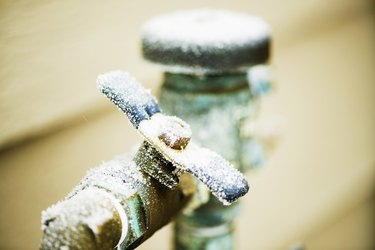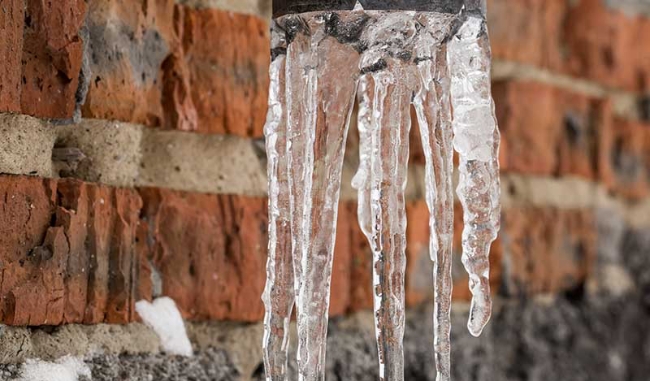Essential Tips to Avoid Frozen Plumbing in Winter: Expert Insights
Essential Tips to Avoid Frozen Plumbing in Winter: Expert Insights
Blog Article
What are your concepts about Preventing and dealing with frozen pipes?

Winter can wreak havoc on your pipes, specifically by freezing pipes. Here's exactly how to prevent it from taking place and what to do if it does.
Intro
As temperatures decrease, the risk of icy pipelines boosts, possibly bring about pricey repairs and water damage. Understanding how to stop frozen pipelines is crucial for home owners in cool environments.
Avoidance Tips
Insulating vulnerable pipes
Wrap pipes in insulation sleeves or make use of warm tape to protect them from freezing temperature levels. Focus on pipes in unheated or outside areas of the home.
Heating techniques
Keep indoor rooms effectively warmed, specifically locations with plumbing. Open cupboard doors to permit cozy air to distribute around pipes under sinks.
Just how to determine icy pipes
Look for decreased water circulation from taps, uncommon smells or sounds from pipelines, and visible frost on subjected pipelines.
Long-Term Solutions
Structural modifications
Take into consideration rerouting pipelines far from exterior walls or unheated locations. Include additional insulation to attic rooms, cellars, and crawl spaces.
Updating insulation
Purchase top notch insulation for pipes, attics, and wall surfaces. Appropriate insulation assists keep consistent temperatures and reduces the risk of frozen pipelines.
Safeguarding Outdoor Pipes
Garden pipes and exterior taps
Disconnect and drain pipes yard hoses prior to winter season. Set up frost-proof faucets or cover outdoor taps with insulated caps.
Recognizing Frozen Pipelines
What creates pipes to ice up?
Pipes freeze when exposed to temperatures listed below 32 ° F (0 ° C) for prolonged periods. As water inside the pipelines freezes, it increases, putting pressure on the pipe walls and possibly triggering them to burst.
Risks and problems
Frozen pipes can bring about supply of water disruptions, residential property damage, and expensive repair services. Ruptured pipelines can flooding homes and cause extensive architectural damages.
Indicators of Frozen Water Lines
Determining icy pipes early can avoid them from bursting.
What to Do If Your Pipelines Freeze
Immediate actions to take
If you think frozen pipes, keep taps open to alleviate stress as the ice melts. Use a hairdryer or towels soaked in warm water to thaw pipelines slowly.
Conclusion
Preventing icy pipelines needs aggressive procedures and fast responses. By understanding the causes, indicators, and safety nets, homeowners can shield their plumbing throughout cold weather.
Helpful Tips to Prevent Frozen Pipes this Winter
UNDERSTANDING THE BASICS: WHY PIPES FREEZE AND WHY IT’S A PROBLEM
Water freezing inside pipes is common during the winter months, but understanding why pipes freeze, and the potential problems it can cause is crucial in preventing such incidents. This section will delve into the basics of why pipes freeze and the associated problems that may arise.
THE SCIENCE BEHIND FROZEN PIPES
When water reaches freezing temperatures, it undergoes a physical transformation and solidifies into ice. This expansion of water as it freezes is the primary reason pipes can burst. As the water inside the pipe freezes, it expands, creating immense pressure on the walls. If the pressure becomes too great, the pipe can crack or rupture, leading to leaks and water damage.
FACTORS THAT CONTRIBUTE TO PIPE FREEZING
Low Temperatures: Extremely cold weather, especially below freezing, increases the risk of pipes freezing. Uninsulated or Poorly Insulated Pipes: Pipes located in unheated areas, such as basements, crawl spaces, or attics, are more prone to freezing. Insufficient insulation or lack of insulation altogether exacerbates the problem. Exterior Wall Exposure: Pipes running along exterior walls are susceptible to freezing as they encounter colder temperatures outside. Lack of Heating or Temperature Regulation: Inadequate heating or inconsistent temperature control in your home can contribute to frozen pipes. PROBLEMS CAUSED BY FROZEN PIPES
- Pipe Bursting: As mentioned earlier, the expansion of water as it freezes can cause pipes to burst, resulting in significant water damage.
- Water Damage: When pipes burst, it can lead to flooding and water damage to your property, including walls, ceilings, flooring, and personal belongings.
- Structural Damage: Prolonged exposure to water from burst pipes can compromise the structural integrity of your home, leading to costly repairs.
- Mold and Mildew Growth: Excess moisture from water damage can create a favorable environment for mold and mildew growth, posing health risks to occupants.
- Disrupted Water Supply: Frozen pipes can also result in a complete or partial loss of water supply until the issue is resolved.
WHY CERTAIN PIPES ARE MORE PRONE TO FREEZING
- Location: Pipes located in unheated or poorly insulated areas, such as basements, crawl spaces, attics, or exterior walls, are at higher risk of freezing.
- Exterior Pipes: Outdoor pipes, such as those used for irrigation or exposed plumbing, are particularly vulnerable to freezing as they are directly exposed to the elements.
- Supply Lines: Pipes that carry water from the main water supply into your home, including the main water line, are critical to protect as freezing in these lines can affect your entire plumbing system.
- Underground Pipes: Pipes buried underground, such as those connected to sprinkler systems or outdoor faucets, can be susceptible to freezing if not properly insulated.
https://busybusy.com/blog/helpful-tips-to-prevent-frozen-pipes-this-winter/

I'm certainly very occupied with How to prepare your home plumbing for winter weather and I am hoping you appreciated the new blog entry. Sharing is nice. Helping people is fun. Thanks a lot for going through it.
Book Instantly Report this page